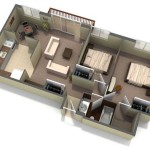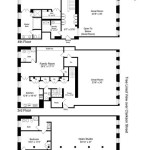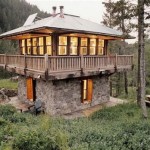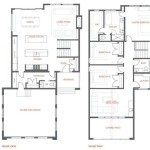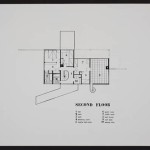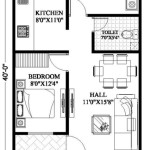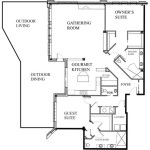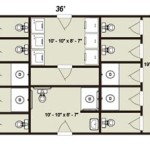Home Plans With Media Rooms: Designing the Ultimate Entertainment Space
The modern home is evolving beyond simple shelter. It's becoming a multifaceted space designed for living, working, and, critically, entertainment. A dedicated media room represents a significant upgrade to the home's entertainment value, offering a space specifically designed for immersive audio and visual experiences. Home plans incorporating media rooms are increasingly popular, reflecting a desire for personalized entertainment within the comfort and convenience of the home. This article explores the key considerations when planning a home with a dedicated media room, focusing on design elements, technological integrations, and acoustic treatment to maximize the viewing experience.
Understanding the Purpose and Function of a Media Room
Before diving into design specifics, understanding the intended use of the media room is essential. Is it primarily for watching movies, playing video games, or a combination of activities? Will it serve as a space for large gatherings, or a more intimate setting for family movie nights? The answers to these questions will dictate the size of the room, the seating arrangements, and the technological requirements. For instance, a media room designed for gaming might prioritize a larger screen and comfortable seating designed for extended periods of active engagement, whereas a home theater focused on cinematic experiences will place greater emphasis on optimized acoustics and comfortable, reclining seating.
Furthermore, consider the ambient lighting and its controllability. The ideal media room allows for complete darkness to maximize screen visibility, but flexible lighting options are necessary for other activities. Dimmable recessed lighting, strategically placed sconces, and even smart lighting systems can tailor the room's atmosphere to the specific activity. The planned usage must also inform the selection of equipment, including projectors, screens, sound systems, and control systems. A smaller room might benefit from a high-quality television and soundbar system, while a larger room could necessitate a projector, dedicated surround sound system, and acoustic treatments to optimize the performance.
Finally, the physical location of the media room within the house plan is crucial. A location away from high-traffic areas will minimize distractions and noise intrusion. Ideally, the room should be internally located, avoiding exterior walls that can transfer sound and temperature fluctuations, which might negatively affect the audio-visual experience.
Key Design Considerations for Media Rooms
Designing an effective media room involves a holistic approach, considering elements beyond just the technology. Room dimensions, seating arrangements, and even the color scheme can significantly impact the viewing experience. Optimal room dimensions are generally rectangular, with a length-to-width ratio that avoids square dimensions, which can lead to standing waves and uneven sound distribution. The ceiling height should also be adequate to accommodate projector placement and sound dispersion.
Seating arrangements play a critical role in comfort and viewing angles. Tiered seating is often employed in dedicated home theaters to ensure unobstructed views for all occupants. Reclining seats with adjustable headrests are popular choices for maximizing comfort during long movie sessions. Alternatively, comfortable sofas and sectional seating can create a more relaxed and social atmosphere. Regardless of the style, ensure ample space between rows for easy movement and consideration of side tables for drinks and snacks.
Color schemes influence the perceived image quality. Darker colors, such as deep blues, grays, or blacks, are preferred for walls and ceilings to minimize light reflection and maximize contrast on the screen. Avoid glossy finishes, which can create distracting reflections. Carpeting or area rugs are also essential for absorbing sound and reducing reverberation. The overall aesthetic should be cohesive and contribute to a comfortable and immersive environment. Soundproofing materials can also be cleverly integrated into the decor to reduce any noise leakage from the room.
Beyond the visual and auditory considerations, think about the practical aspects of the design. Sufficient electrical outlets are essential for powering all the equipment. Consider dedicated circuits for high-power devices like projectors and amplifiers to prevent overloading. Proper ventilation is also crucial to dissipate heat generated by electronic equipment. A well-designed media room should not only look and sound great but also function efficiently and safely.
Acoustic Treatment and Soundproofing Strategies
The acoustics of a media room can significantly impact the quality of the audio experience. Untreated rooms often suffer from excessive reverberation, standing waves, and poor sound clarity. Acoustic treatment aims to address these issues by absorbing, reflecting, and diffusing sound waves to create a balanced and immersive sound field.
Sound absorption materials, such as acoustic panels, bass traps, and thick curtains, are used to reduce reverberation and control the decay time of sound. Acoustic panels are typically mounted on walls to absorb mid and high-frequency sound waves, while bass traps are strategically placed in corners to absorb low-frequency sounds. Thick curtains can dampen sound reflections and block out external light. The placement of these materials is critical and often requires professional acoustic analysis to determine the optimal configuration.
Sound diffusion materials, such as diffusers, scatter sound waves to create a more spacious and enveloping sound field. Diffusers are typically placed on the rear wall and ceiling to break up reflections and prevent flutter echoes. The combination of absorption and diffusion helps to create a balanced and natural sound experience.
Soundproofing, on the other hand, focuses on preventing sound from entering or leaving the media room. This involves addressing sound transmission through walls, ceilings, floors, and doors. Techniques such as adding mass to walls (using drywall or soundproofing panels), decoupling walls (creating an air gap between layers), and sealing gaps and cracks can significantly reduce sound transmission. Solid-core doors with airtight seals are essential for minimizing sound leakage. Furthermore, consider using resilient channels and clips to isolate the wall structure from the studs, further reducing vibrational sound transmission.
Employing a combination of acoustic treatment and soundproofing techniques is crucial for creating a media room that delivers both exceptional sound quality and minimal disturbance to other areas of the home. Professional acoustic consultants can provide valuable guidance in selecting and implementing the appropriate solutions based on the room's specific characteristics and the desired performance levels.
Integrating Technology and Control Systems
The technology within a media room is the focal point of the entertainment experience. The selection of equipment, including the display, audio system, and control system, plays a critical role in delivering immersive visuals and high-fidelity sound. Modern media rooms often incorporate smart home technology for seamless control and automation.
The display is arguably the most important component of the media room. Projectors offer a larger screen size and a more cinematic experience, but they require a darkened room and a dedicated screen. High-quality televisions, particularly OLED and QLED models, provide excellent image quality and contrast, even in moderately lit environments. The screen size should be appropriate for the viewing distance, ensuring a comfortable and immersive viewing experience.
The audio system is equally crucial for creating a captivating soundscape. A surround sound system, consisting of multiple speakers strategically placed around the room, provides a more immersive and realistic audio experience. Dolby Atmos and DTS:X are popular surround sound formats that create a three-dimensional sound field, with sounds coming from above and around the listener. Choosing the right amplifier, speakers, and subwoofer is essential for delivering clear and powerful sound.
A robust control system simplifies the operation of all the electronic components in the media room. Universal remotes, smart home controllers, and voice-activated assistants allow users to easily control the display, audio system, lighting, and other devices. Integrating the media room with a smart home system enables automation and personalized control. For example, a single command can dim the lights, lower the screen, and start the movie. Consider a centralized control system that integrates all devices for seamless operation.
In addition, think about future-proofing the technology. Choosing equipment with the latest standards and connectivity options ensures compatibility with future technologies and avoids obsolescence. Consider running extra cables and conduits during the construction phase to accommodate future upgrades and expansions.
The integration of technology and control systems should be seamless and intuitive, enhancing the entertainment experience rather than complicating it. A well-designed system allows users to focus on enjoying the content without being distracted by technical complexities.

One Level Craftsman Home Plan With Game And Media Rooms 54030lk Architectural Designs House Plans

Image Result For Single Story 4 Bedroom Floor Plan With Game Room And Media House Plans One Country Style

One Level New American Craftsman Home Plan With Office And Media Room 25418tf Architectural Designs House Plans

Striking Craftsman House Plan With Media Room 23832jd Architectural Designs Plans

Luxury Modern Home Plan With Spacious Media Room 23751jd Architectural Designs House Plans

4 Bed European Home Plan With Media Exercise Room 48593fm Architectural Designs House Plans

Luxury Modern Home Plan With Spacious Media Room 23751jd Architectural Designs House Plans

Luxury Modern Home Plan With Spacious Media Room 23751jd Architectural Designs House Plans

New American Ranch Home Plan With Office And Media Room 25423tf Architectural Designs House Plans

French Country Home Plan With Media Room And Fifth Bedroom Expansion Upstairs 15743ge Architectural Designs House Plans

